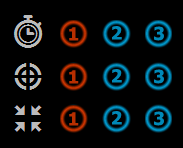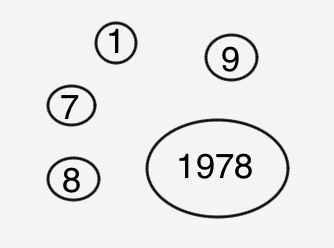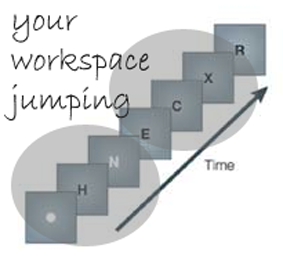N-Back Accuracy in i3’s 2G Dual N-Back Game
In the original Jaeggi dual n-back algorithm, staying at the same n-back level without dropping down a level requires that you are 75% accurate. Going up an n-back level requires you are 85% accurate.
Because there is considerable room for error (such as missing targets) in these accuracy levels, it is possible to use game-specific strategies to improve your n-back score. These strategies do not actually help you expand your brain’s working memory capacity (see below), although they result in increasing n-back levels and the appearance of better working memory performance.
.
The accuracy level in our 2G n-back can be systematically increased. You can select levels of accuracy in the second (cross-hairs icon) option shown here. The default is 1 which is the standard Jaeggi accuracy settings.
2 and 3 settings increase the accuracy requirement progressively, with level 3 requiring 100% accuracy to go up an n-back level. Higher accuracy levels prevent game-specific strategies that artificially increase your n-back levels.[space]
 Accuracy Level & Game Specific Strategies
Accuracy Level & Game Specific Strategies
There are two basic types of training for i3 Mindware and other working memory training programs: strategy training and core training (review Morrison & Chein, 2011).
Strategy training is ‘domain specific’ – it helps performance for specific tasks and specific types of information. Core training targets ‘domain-general’ working memory functions that can be applied to many tasks and many types of information – such as attentional focus, ignoring irrelevant information, encoding and retrieving information, and responding to targets. It is these kinds of ‘core’ functions are the most important ones in your working memory training, and have the most wide-reaching benefits for your cognition.
Higher accuracy level settings help prevent the use of domain-specific strategies such as the following:
- Chunking. Sometimes during the standard dual n-back game, a letter or location may be repeated one two or even three times. When this happens it is easier perform on the n-back exercise because with only one ‘place holder’ there is less information to ‘encode’ to do the task. Or at other times, there may be a meaningful string of letters that forms a word or acronym, or the sequence of locations forms a known shape. When items can be grouped together like this, easing the burden on our memory system, this is called ‘chunking’. Chunking can also benefit from practice.
- Attention jumping. As you get more experienced with the standard dual n-back game it is possible to strategically direct your attention in ‘jumps’ to useful strings of letters or square locations in order to maintain or go up an n-back level. Using this strategy, you are not actually updating the items in your working memory continuously, but are ‘counting through’ a particular string of items and then refreshing it from the start again for the next string.
- Playing the odds. Another strategy that can be used in the standard dual n-back is ‘intelligent guessing’ when you are less precise with your location memory, for instance, but can make good guesses that the stimulus was to the left, or to the right for instance. This gives you better ‘odds’ at reach the required level of accuracy to maintain or go up an n-back level.
Using any of these strategies is counter-productive for working memory training. And here’s why. These strategies are actually ways of getting around (i.e. compensating for) limitations of working memory capacity to increase your n-back performance. But getting practice with these strategies does not actually help increase working memory capacity itself.
Why 2G N-back training can counter the use of domain-specific strategies
All of the above strategies require that you are allowed some error in your responses. The more error you are allowed, the more you can ‘play the odds’ and so on. Setting your accuracy in the 2G training options to 2 or 3 reduces the amount of error you are allowed, thereby helping prevent you from using the strategies above.
References




